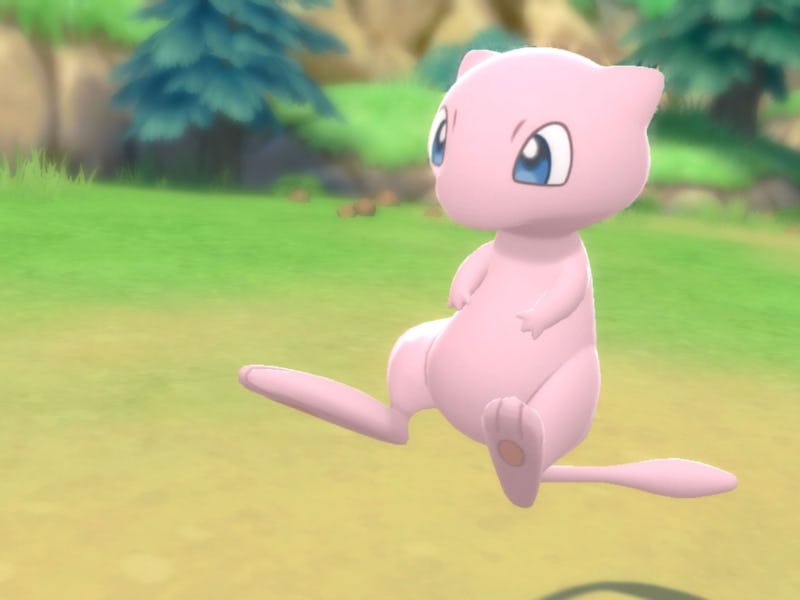10 Years Ago, Pokémon Made a Radical Pivot — And Changed the Franchise Forever
The first 3D mainline games brought Pokémon into the RPG arms race.

October 12, 2013 marked a number of firsts for the Pokémon franchise. On that date, the Pokémon Company released its first pair of main series games released on the Nintendo 3DS. These were the first games in the series to receive a simultaneous worldwide release after over a decade of staggered launches. They were also the first main series games to feature full 3D animation, a change that would not just overhaul Pokémon’s aesthetics but how the brand presented itself as a whole. Ten years after Pokémon X and Y’s release, that change is still ongoing.
X and Y weren’t the first 3D Pokémon games ever. Before that, there was Pokémon Snap and Pokémon Stadium on the Nintendo 64, while the GameCube offered Pokémon Colosseum and Pokémon XD: Gale of Darkness. But to finally apply this to the structure of the mainline titles — the games based around battling gym leaders, knocking off a villainous team, and catching ‘em all that turned Pokémon into an international sensation — felt like a massive leap. After years of resistance, Pokémon was entering the graphics arms race that consumed its industry.
It cannot be understated how much of a powerful niche Pokémon inhabited. It’s not only a top Nintendo franchise but a titan within the popular role-playing game genre thanks to a precise mix of accessibility and marketability. X and Y got a massive advertising campaign, and the inner workings of the games indicated a further push into widening Pokémon’s reach: X and Y would shave off any prospective rough edges.
The 3D world of Kalos caught Pokémon up with its RPG counterparts.
Here’s one example of how Pokémon X and Y became easier. In early games, only the Pokémon directly engaging in battle gets experience points used to level up. The only exception to this rule was a special item called Exp. Share, which could be held by one Pokémon, allowing them to rack up experience points while sitting on the bench during battles. However, in X and Y, Exp. Share transformed from a “Held Item” to a “Key Item” that suddenly distributed experience across all your Pokémon, making it a lot easier to level up your team. In other words, on a base level, the difficulty was toned down.
How this affected the experiences of players ranges from person to person, and the merits of the “Pokémon becoming easier” argument remains a hotly contested debate today. But it’s clear this element lowered the learning curve. There was less of the standard RPG grinding and more focus on pushing players through the game with a certain level of fluidity. Doing so in 3D, a transition that many other RPGs made years earlier thanks to using more powerful gaming hardware than Nintendo’s line of handhelds, pitted Pokémon against the rest. For years, its charming 2D monster sprites and worlds made it definitively distinct in look. Now Pokémon fit in comfortably next to rival franchises like Final Fantasy.
The world of Kalos has it’s problems, but it’s definitely beautiful.
However, the 3D move also illuminated Pokémon’s limitations, something the franchise still reckons with today. The new 3D sprites retained little of the energy their 2D counterparts had, and it wasn’t until the recent Sword and Shield, Legends: Arceus, and Scarlet and Violet entries when we could see Pokémon roaming around in an open-world habitat that they finally seemed reinvigorated. For all of the initial eye-popping that 3D gave the series, X and Y’s Kalos region felt smaller than ever. The amount of roadblocks and hand-holding portions you encounter ranges from game to game, but traversal through Kalos felt jarringly strict. With more and more RPGs lavishing in bigger and increasingly detailed environments, Pokémon felt like it made just as many steps back as it did forward in catching up to its RPG counterparts.
X and Y made up for this at points with the detail it did provide. The France-based Kalos region with its rustic architecture and picturesque settings elicited a kind of delight that the franchise harnesses better than most other series. Honed since the Game Boy days, discovery, whether in finding a new Pokémon or walking into a new town, is a finely tuned sensation. But if you’ve seen the reaction to Scarlet and Violet (where the notoriety of leaping into the series’ first fully open world was counterbalanced by an array of glitches and criticism of bland visuals,) it’s clear that whatever move X and Y pushed the franchise toward still has kinks to work out. In 2023, Pokémon’s pivot to 3D is still just that: A move. Not a destination.
The 3D sprites of X and Y just don’t have the same charm.
Ten years later, it’s not hard to find evidence of nostalgia for X and Y that all Pokémon generations eventually accrue. Screenshots of its online Player Search System, which allowed players to connect with friends, acquaintances, and passers-by in equal measure, float around on social media as evidence of better, “simpler” times. And within a few years, the hyper-successful Pokémon Go launched, cementing Pokémon’s 3D sprites and universe as the norm for an army of newcomers to the series.
Like Poliwhirl’s ability to transform into either Poliwrath or Politoed, or the choice to turn Gloom into either Bellossom or Vileplume, with X and Y, Pokémon took the chance to move to full 3D and open itself up to the potential (and problems) it would hold. It was an evolution, though not into its final form. The aims of a change to 3D, ones where we see a world as confidently and immaculately constructed as the 2D heights of the series like HeartGold and SoulSilver or Black and White, have yet to come.
This article was originally published on